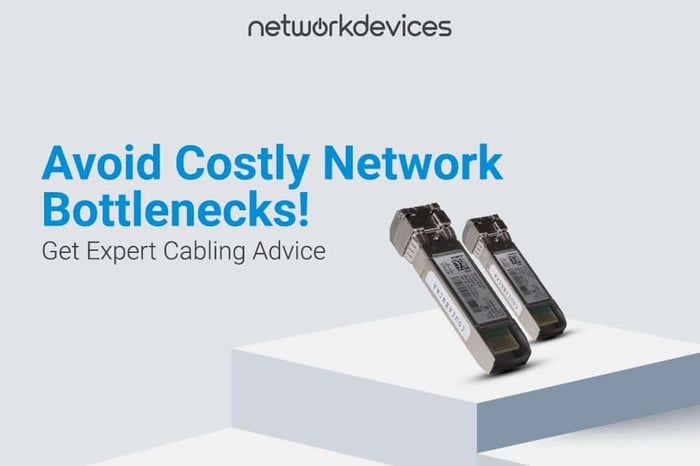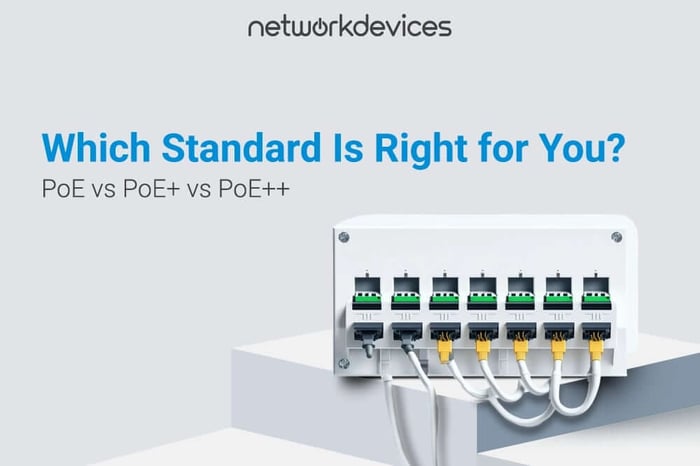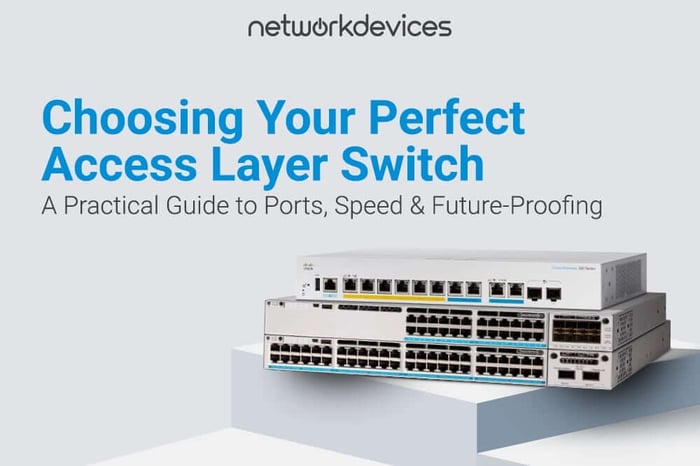You have no items in your shopping cart.

Best NICs for HPC & Virtualization in 2025
As we head deeper into 2025, the importance of high-performance Network Interface Cards (NICs) has never been greater. NICs are no longer just connectors in a world dominated by virtualization, real-time analytics, and cloud-native infrastructure. They are intelligent, programmable components driving speed, security, and scalability at the edge of your data center.
This article explores the best NICs for High-Performance Computing (HPC) and virtualized environments. Whether you're scaling AI clusters, reducing CPU overhead, or planning a secure multi-tenant cloud, the right NIC can dramatically improve throughput, offload compute-intensive tasks, and increase overall system efficiency.
From GPUs to DPUs: A Parallel Evolution
The rapid evolution of Graphics Processing Units (GPUs) holds a lesson for network engineers. GPUs moved quickly from simple rendering engines to powerful, standalone AI processors. In contrast, NICs remained passive for decades, focusing solely on sending and receiving packets.
That changed with the rise of software-defined infrastructure, high-frequency trading systems, and cloud-native applications. Suddenly, NICs had to secure east-west traffic, enforce Zero Trust policies, support multi-tenant virtualization, and offload VM switching and encryption.
The result? A new generation of SmartNICs and DPUs—programmable NICs that include processors, memory, and even embedded operating systems. These modern NICs are critical to unlocking next-gen performance in dense, distributed environments.
What’s New in NIC Technology for 2025?
Modern SmartNICs and DPUs now offer:
- 200–800 Gbps speeds via PCIe 6.0 and CXL
- Hardware offloads for NVMe-over-Fabrics, RDMA, and VXLAN
- Compatibility with orchestration tools like DPDK and eBPF
- Independent control-plane processing and VM-level encryption
By offloading CPU-heavy workloads like traffic inspection, telemetry, or firewall rules, these network adapters help prevent bottlenecks and reduce energy consumption—especially in AI model training or high-frequency financial trading applications.
The Evolution of Network Interface Cards
Standard NICs
In the early days, NICs were simple hardware interfaces responsible for transferring packets over Ethernet. These standard NICs relied on the host CPU for most packet processing and were sufficient for low-speed, low-latency environments. They supported basic features like MAC addressing and Ethernet frame checks but had no offloading or intelligent capabilities.
Enhanced NICs
As 10GbE and higher bandwidth became the norm, standard NICs struggled to keep up. Enhanced NICs introduced offloading capabilities like TCP Segmentation Offload (TSO), Large Receive Offload (LRO), and checksum offloading. These improvements helped reduce CPU load but still didn’t offer programmability or autonomous decision-making.
SmartNICs
SmartNICs emerged with embedded processing power (e.g., ARM cores, FPGAs) and firmware that allowed them to take on more advanced roles, such as:
- Virtual switching
- VXLAN/GRE tunneling
- IPsec encryption
- Packet filtering
They reduced the burden on the host CPU and became valuable in SDN/NFV deployments and multi-tenant cloud infrastructure.
DPUs (SmartNICs 2.0)
Data Processing Units go beyond SmartNICs. They contain:
- Multi-core CPUs
- Onboard memory
- Linux-based operating systems
DPUs can execute microservices, manage telemetry, enforce security policies, and run control-plane functions independently of the host server. They are critical for next-gen cloud-native, AI-first, and zero-trust data centers.
Key Features to Look for in a 2025 NIC
Speed & Bandwidth
Modern NICs range from 10 Gbps to 800 Gbps, with 200 Gbps quickly becoming the enterprise standard. Fast networking is vital for data-intensive tasks like AI training, 8K video rendering, or real-time analytics. Technologies like PCIe 6.0 and Compute Express Link (CXL) enable better throughput and lower latency across subsystems.
SR-IOV Support
Single Root I/O Virtualization allows multiple virtual machines to share a physical NIC directly, bypassing the hypervisor layer. This results in lower CPU overhead and better throughput, making SR-IOV essential for dense virtualized platforms like VMware vSphere, KVM, and Hyper-V.
RDMA (RoCEv2 or iWARP)
Remote Direct Memory Access enables zero-copy data transfers between systems, significantly improving performance for HPC and storage fabrics. RoCEv2 (RDMA over Converged Ethernet) and iWARP are commonly used in AI clusters and NVMe-over-Fabrics storage environments.
VXLAN/GRE Offload
Offloading encapsulation tasks (like VXLAN and GRE) to the NIC removes processing overhead from virtual switches and CPUs. This is crucial for overlay networks used in OpenStack, Kubernetes, and container orchestration platforms.
DPDK and eBPF Support
The Data Plane Development Kit (DPDK) and eBPF (Extended Berkeley Packet Filter) allow developers to write high-speed, programmable packet handlers and monitoring tools. NICs that support these frameworks can be tailored for SDN, SASE, and telemetry-heavy applications.
SmartNIC & DPU Capabilities
Look for onboard CPUs, hardware accelerators, encryption engines, and isolation features. A good DPU can run containerized services, manage control-plane logic, and enforce network segmentation, without CPU involvement.
Top NICs for HPC in 2025
1. NVIDIA ConnectX-7
- Speed: Up to 400 Gbps
- Ideal For: RDMA clusters, GPUDirect environments, deep learning training
- Key Features: RoCEv2, NVMe-over-Fabrics, VXLAN offload
2. Intel E810-XXVDA2 / E823-L
- Speed: 25–100 Gbps
- Ideal For: VMware, Hyper-V, scalable compute
- Key Features: SR-IOV, DPDK, GTP-U offload, telemetry
3. Broadcom NetXtreme E-Series
- Speed: 25–200 Gbps
- Ideal For: High-frequency trading, dense compute nodes
- Key Features: VXLAN, NVGRE, NPAR, RoCEv2
4. AMD Pensando DPU
- Speed: Up to 200 Gbps
- Ideal For: Multi-tenant cloud, storage disaggregation
- Key Features: Full SmartNIC offload, advanced security, telemetry
Top NICs for Virtualization in 2025
1. NVIDIA BlueField-3 DPU
- Speed: 200 Gbps
- Ideal For: Zero Trust architectures, VM isolation
- Key Features: SR-IOV, TLS/IPsec offload, SmartNIC OS, telemetry
2. Intel Mount Evans DPU
- Speed: 200 Gbps
- Ideal For: Cloud-native virtualization stacks
- Key Features: Virtual switching, NVMe offload, IPsec, microservices
3. Marvell OCTEON 10
- Speed: Up to 100 Gbps
- Ideal For: Container-native infrastructure, SD-WAN
- Key Features: ARM Neoverse cores, TLS offload, data compression
4. Broadcom Stingray SmartNIC
- Speed: 25–100 Gbps
- Ideal For: High-telemetry cloud environments
- Key Features: VXLAN/Geneve offload, TCP/IP stack offload, SR-IOV
Additional Enterprise NICs Worth Considering
1. Dell Broadcom 57416 (NP9WY)
- Speed: 2x10GbE + 2x1GbE
- Ideal For: SMB data centers, edge servers, cost-sensitive VMware deployments
- Key Features: SR-IOV, VXLAN offload, dual-speed flexibility
- Speed: 25GbE
- Ideal For: Virtualization clusters, RoCE-based fabrics
- Key Features: SmartNIC architecture, RDMA support, DPDK-ready
FAQs
What is the best NIC for VMware vSphere in 2025?
Intel’s E810 or Broadcom’s NetXtreme series. Both support SR-IOV, DPDK, and telemetry.
How does SR-IOV improve performance?
It lets VMs bypass the hypervisor to access NIC resources directly, reducing latency and CPU load.
What’s the difference between SmartNIC and DPU?
SmartNICs offload packet handling. DPUs run a full OS and can offload control/data-plane functions too.
Are older NICs like ConnectX-5 still good in 2025?
Yes—for many mid-scale virtualized environments, they’re cost-effective and still very capable.
Summary: Choose a NIC That Matches Your Workload
In 2025, NICs are no longer passive interfaces—they’re intelligent, secure computing nodes at the network edge. Whether you're:
- Scaling AI infrastructure
- Optimizing cloud-native VMs
- Or disaggregating storage with NVMe-oF
The right NIC will enhance your performance, reduce your TCO, and unlock new architectural possibilities.
Invest wisely—and your systems will scale with confidence.






